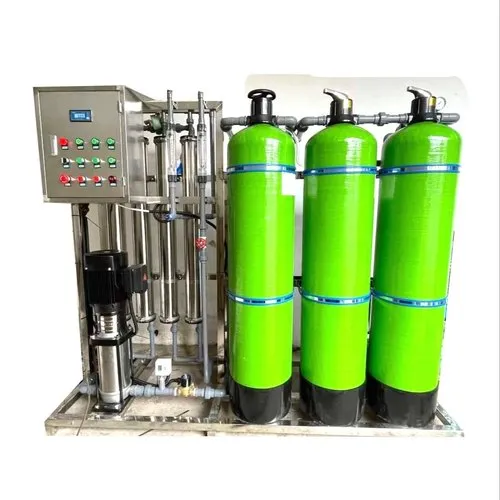In an era where access to clean and safe water is increasingly vital, the role of advanced water treatment technologies cannot be overstated.
Among these technologies, reverse osmosis (RO) has emerged as a powerful tool for purifying water and making it suitable for various applications, from residential to industrial. One such advancement in this field is the 1000LPH (Liters Per Hour) Reverse Osmosis Water Treatment Plant, a remarkable solution that offers numerous benefits in ensuring a consistent supply of high-quality water.
Reverse Osmosis: A Brief Overview
Reverse osmosis is a process that utilizes a semipermeable membrane to separate impurities, contaminants, and particles from water. By applying pressure, water molecules are forced through the membrane, leaving behind pollutants and producing purified water. This technique is effective in removing a wide range of impurities, including minerals, heavy metals, bacteria, viruses, and other dissolved solids.
The Significance of 1000LPH Capacity
The capacity of a reverse osmosis water treatment plant is a critical factor in determining its practical utility. The 1000LPH capacity signifies that the plant can produce 1000 liters of purified water per hour.
This capacity is particularly valuable in scenarios where a consistent and substantial supply of clean water is required, such as in small to medium-sized communities, industries, research laboratories, and remote locations.

Benefits of a 1000LPH Reverse Osmosis Water Treatment Plant
Water Purity: The primary advantage of an RO water treatment plant is its ability to produce water of exceptional purity. The semipermeable membrane effectively removes contaminants down to the molecular level, ensuring that the output water is free from impurities that could compromise its quality.
Health and Safety: In regions where access to clean drinking water is limited, a 1000LPH RO plant can play a pivotal role in improving public health. By removing harmful substances such as bacteria, viruses, heavy metals, and chemical pollutants, the plant provides a safe source of drinking water.
Industrial Applications: Industries that require high-quality water for their processes, such as pharmaceuticals, food and beverage production, and electronics manufacturing, can benefit immensely from a 1000LPH RO plant. Consistent water quality is crucial for maintaining product integrity and minimizing production disruptions.
Environmental Impact: Implementing a robust water treatment system reduces the environmental burden of waterborne pollution. By preventing contaminants from entering local water sources, the plant contributes to the overall health of ecosystems and minimizes the need for single-use plastic bottles.
Resource Efficiency: The 1000LPH capacity strikes a balance between meeting water demand and conserving resources. It’s well-suited for applications that require a significant water supply without excessive wastage.
Remote and Challenging Locations: For remote communities, research stations in isolated areas, or disaster-stricken regions, a 1000LPH RO plant can provide a lifeline by offering a reliable source of clean water. Its modular design and adaptability make it suitable for a variety of settings.
Customization and Scalability: RO water treatment plants are often designed to be modular, allowing for customization and scalability based on specific requirements. This adaptability ensures that the plant can be tailored to fit various water sources and demands.
Challenges and Considerations
While a 1000LPH RO water treatment plant offers numerous benefits, certain challenges and considerations must be taken into account:
Energy Consumption: The process of reverse osmosis requires energy to operate the pumps that create the necessary pressure. While advancements in energy-efficient technology have mitigated this concern, energy consumption remains a consideration.
Maintenance: Regular maintenance of the plant’s components, including the membranes, pumps, and filters, is essential to ensure optimal performance and longevity.
Waste Disposal: RO generates a concentrated brine solution containing the removed impurities. Proper disposal of this waste is crucial to prevent environmental damage.
Initial Investment: The installation and setup of a 1000LPH RO plant involve an initial investment. However, this cost is often offset by the long-term benefits and savings in water-related expenses.
Conclusion
The 1000LPH Reverse Osmosis Water Treatment Plant represents a significant step forward in the quest for clean and safe water. Its ability to produce large quantities of purified water per hour, coupled with its numerous benefits in terms of water quality, health, industry, and environmental impact, makes it a valuable asset in various contexts. By addressing challenges through efficient technology and proper management, the 1000LPH RO plant stands as a beacon of hope in ensuring access to pure hydration for communities and industries alike.



